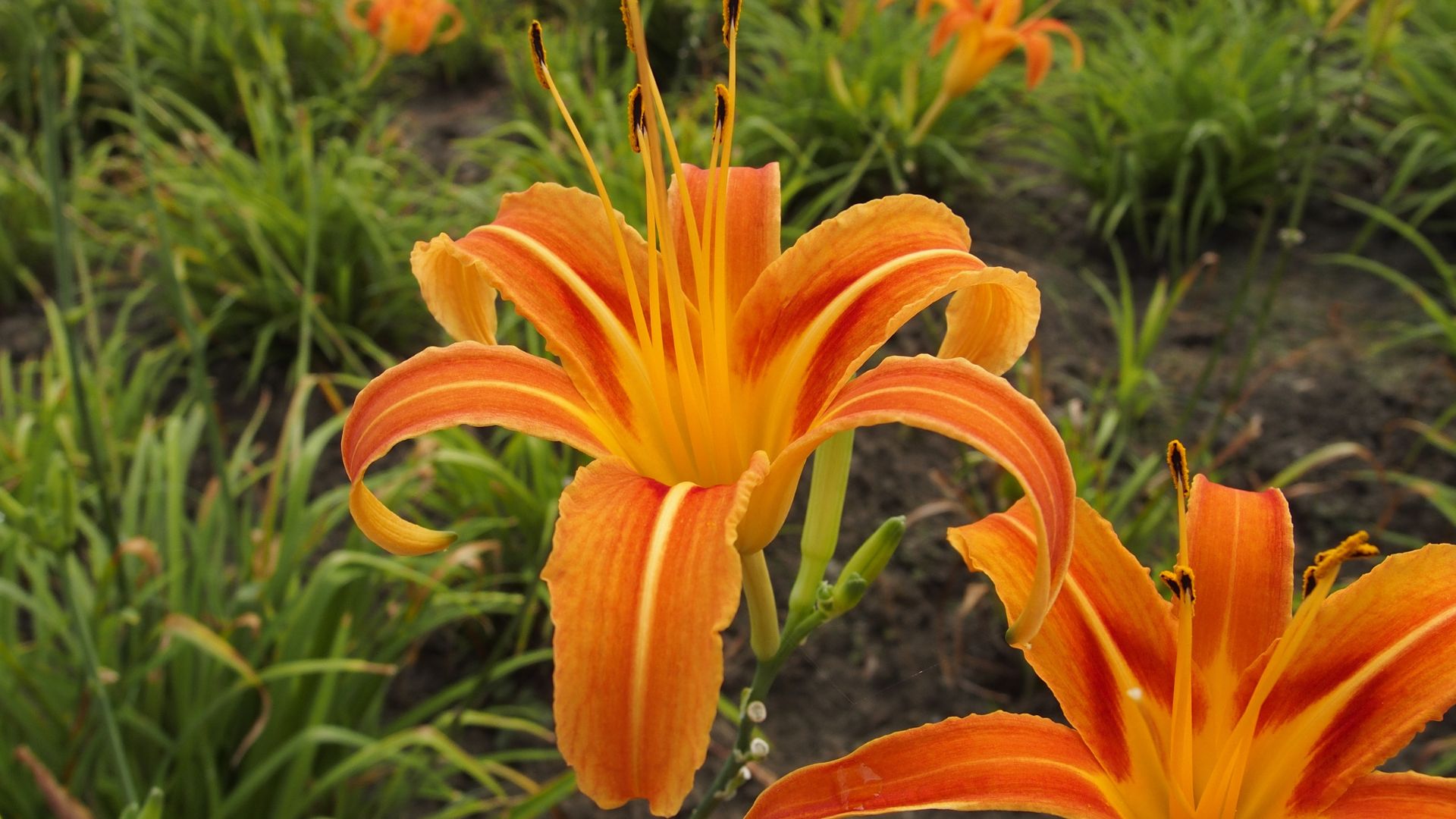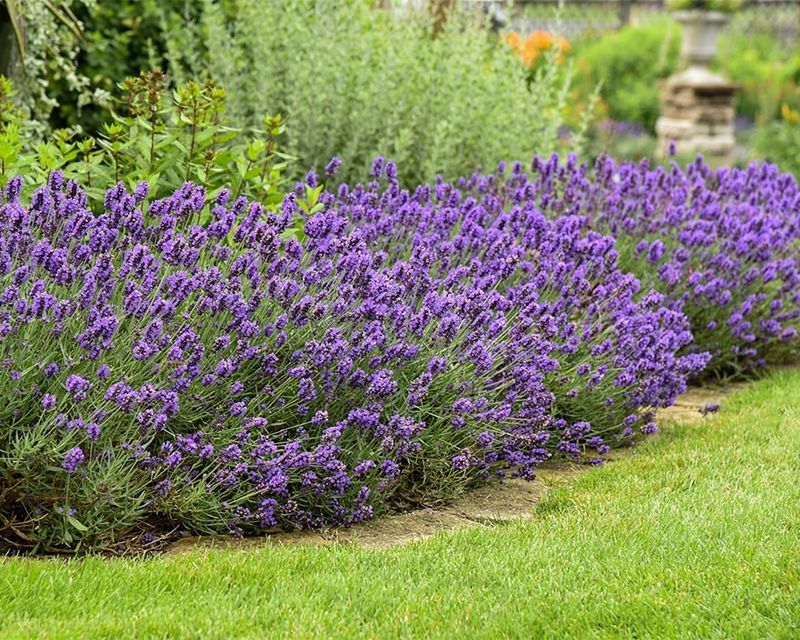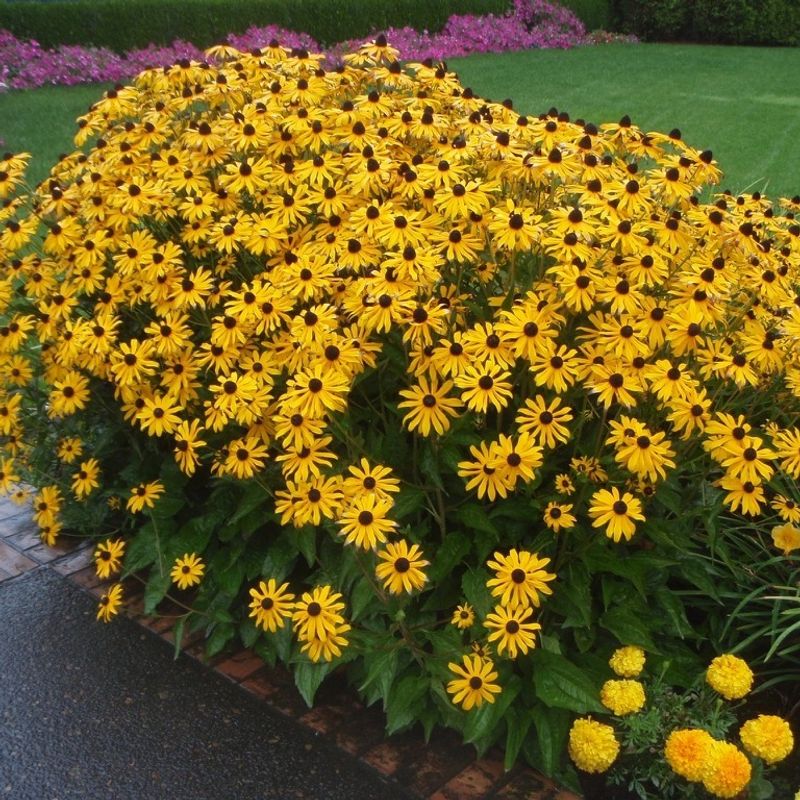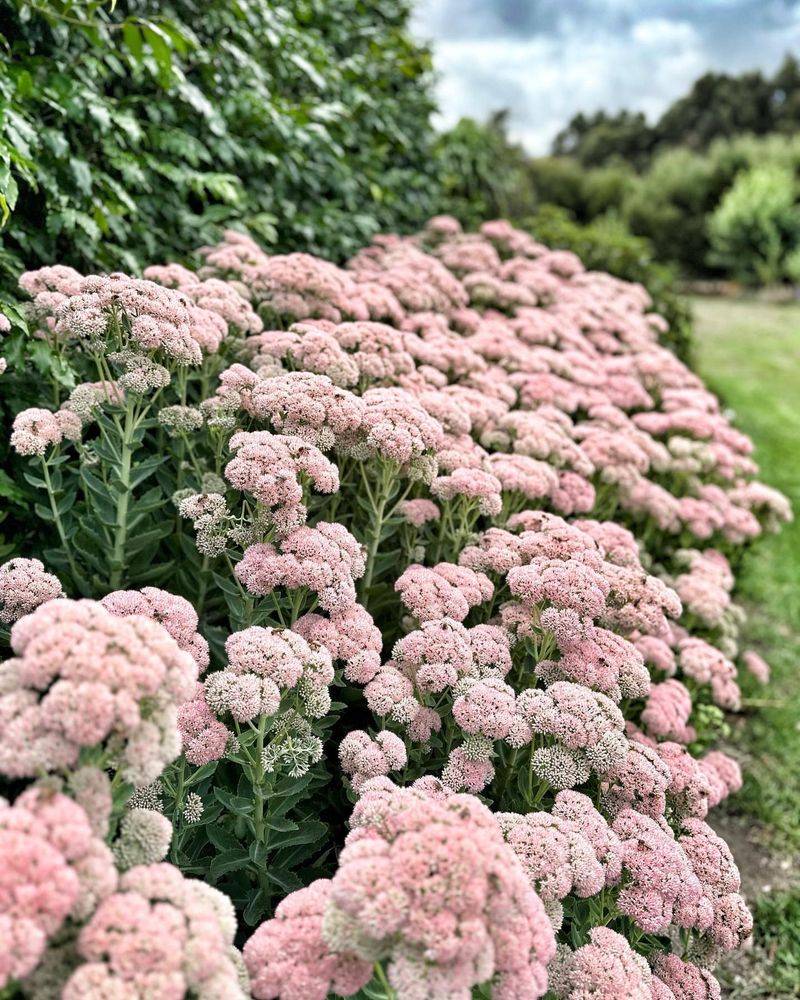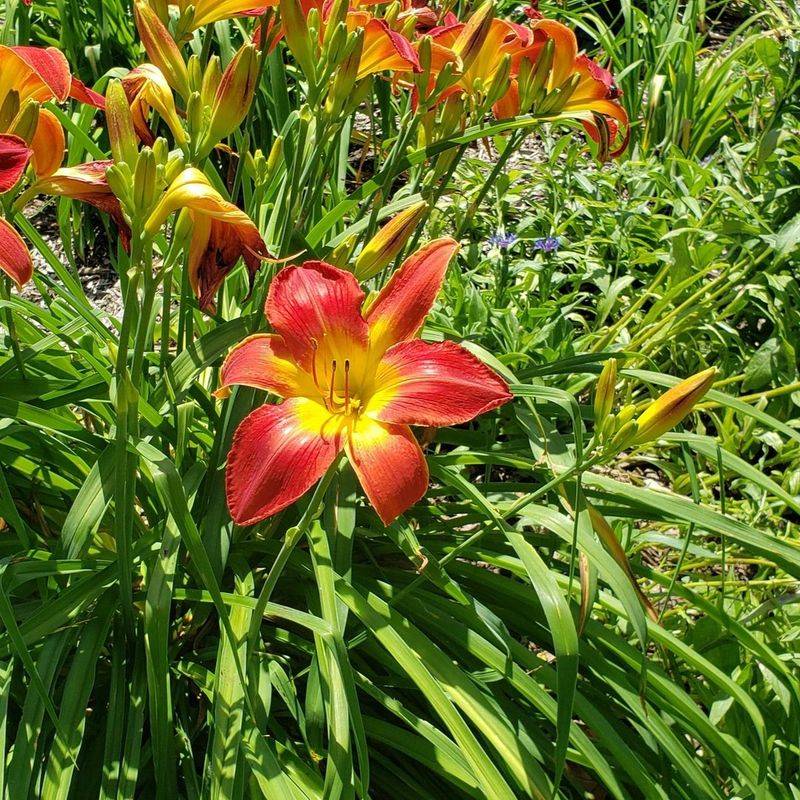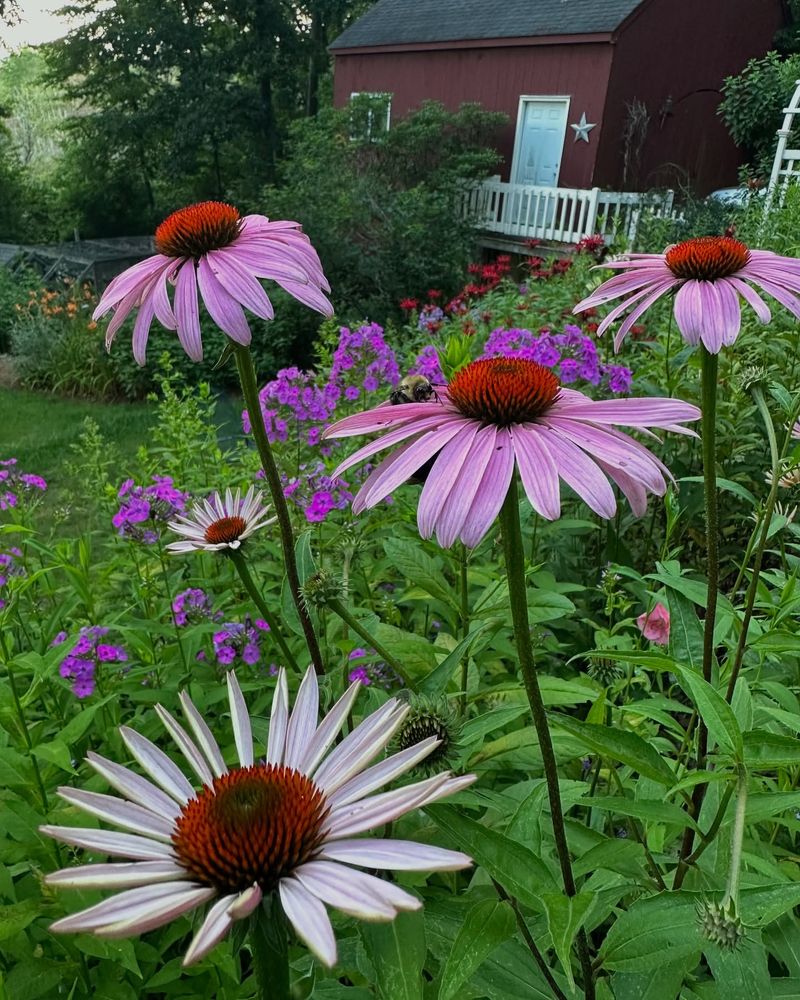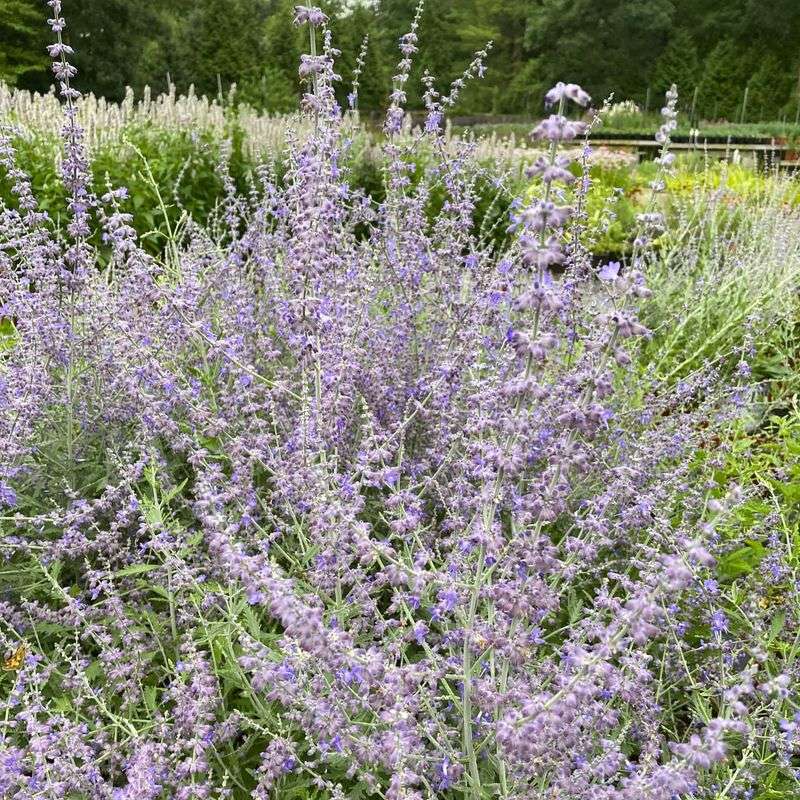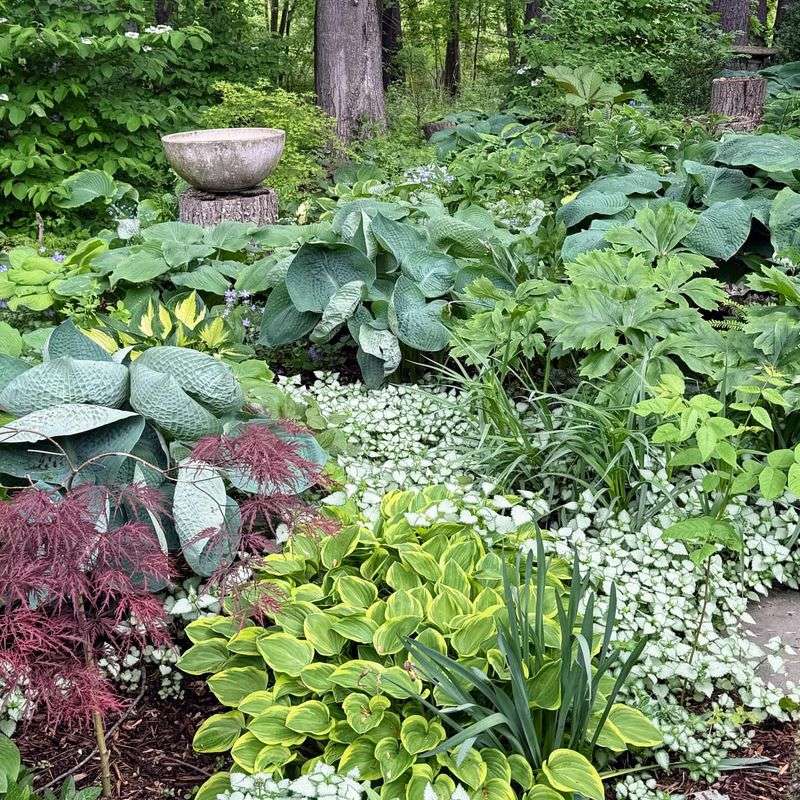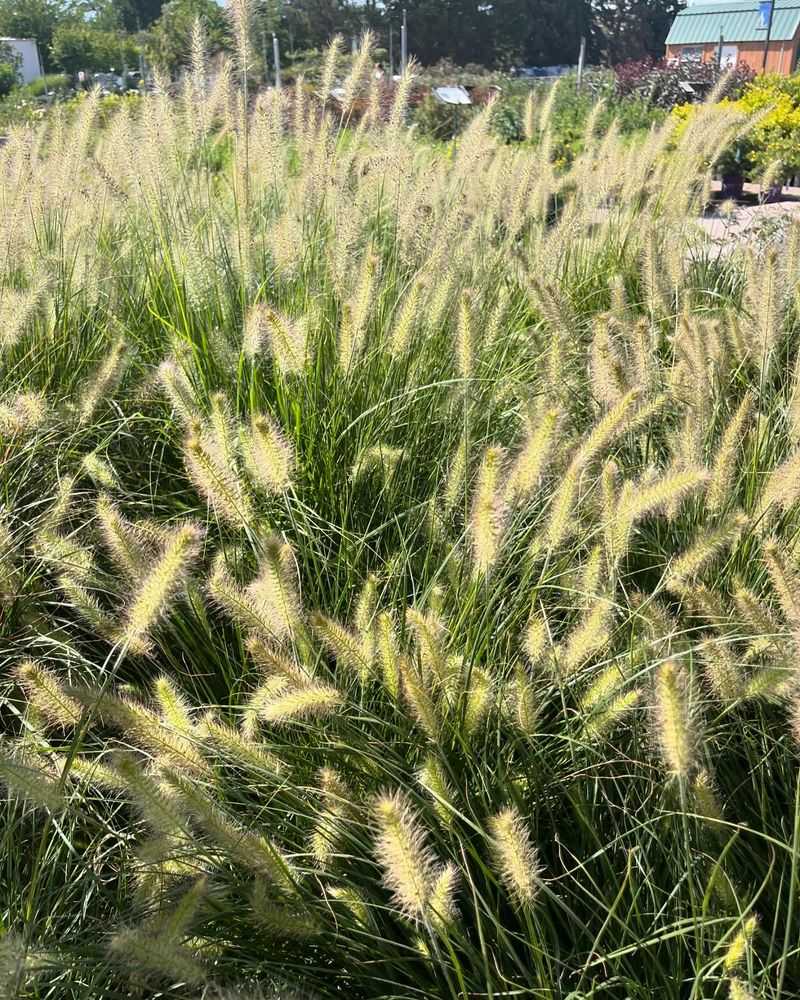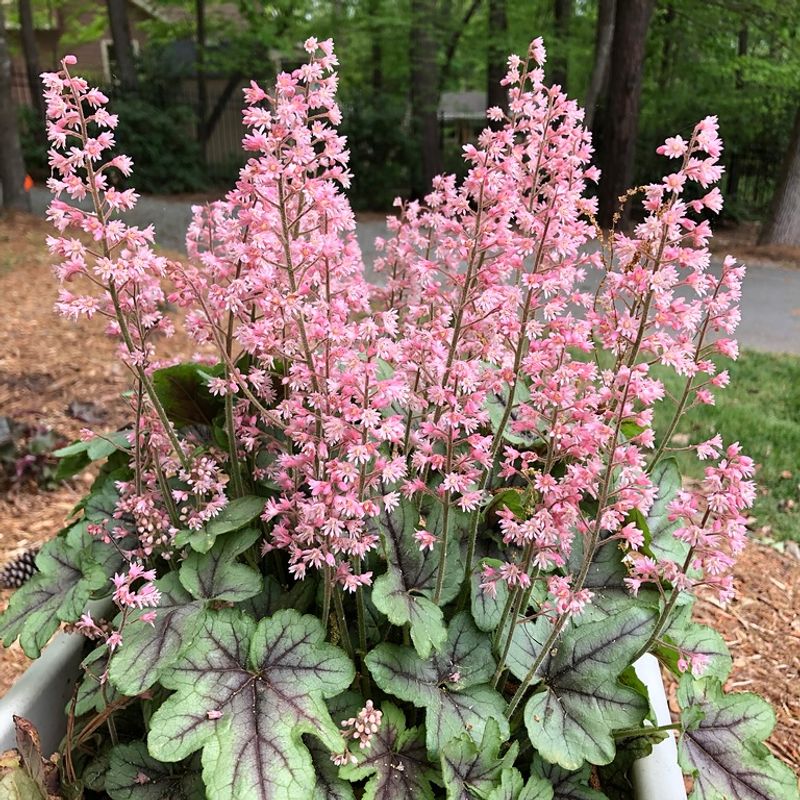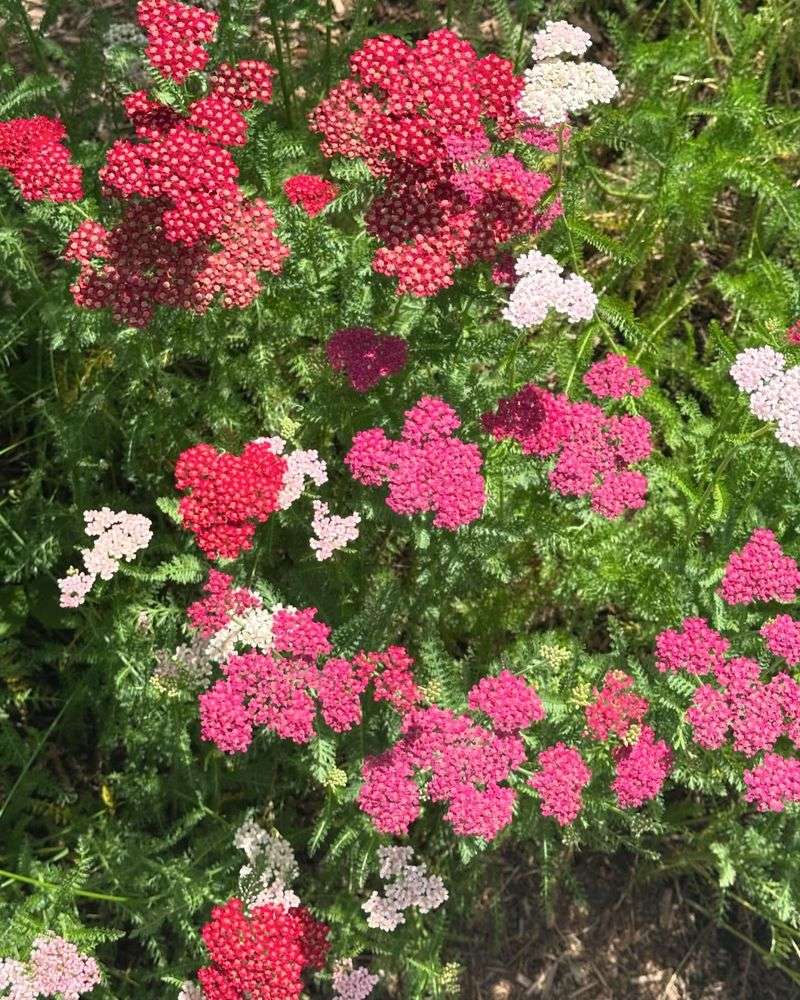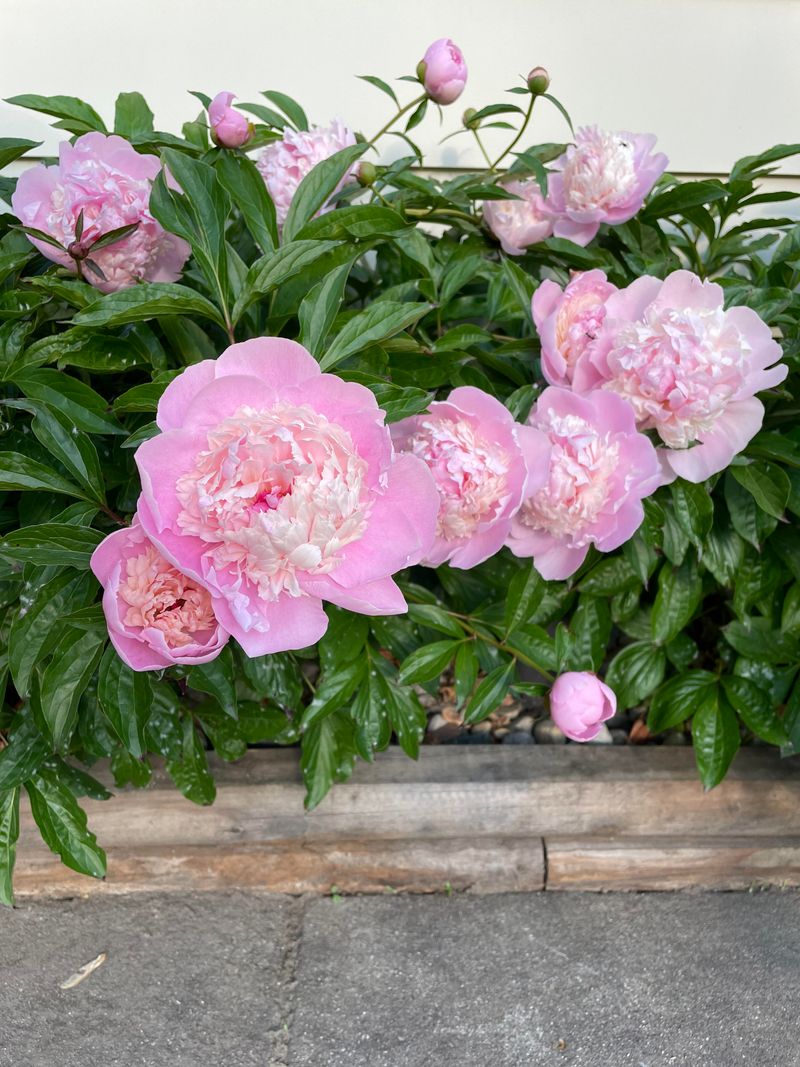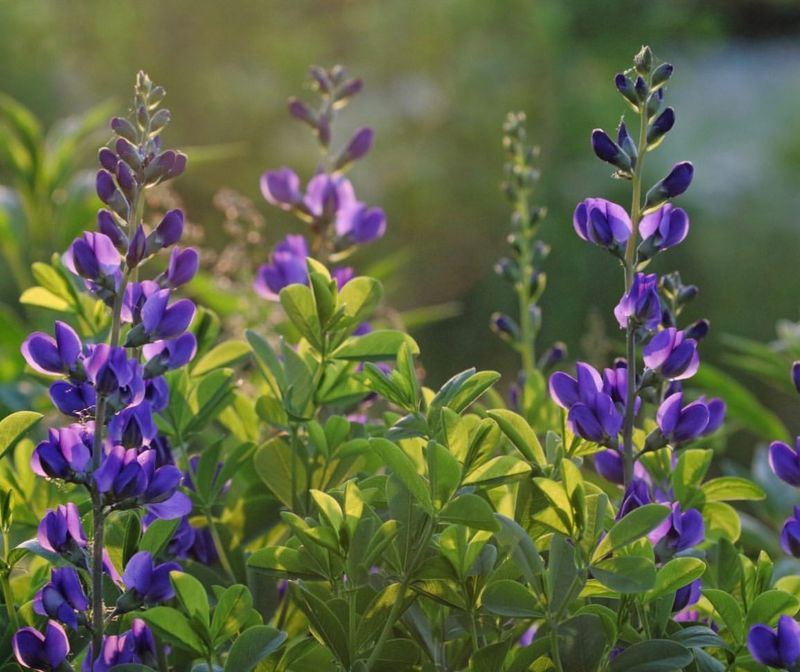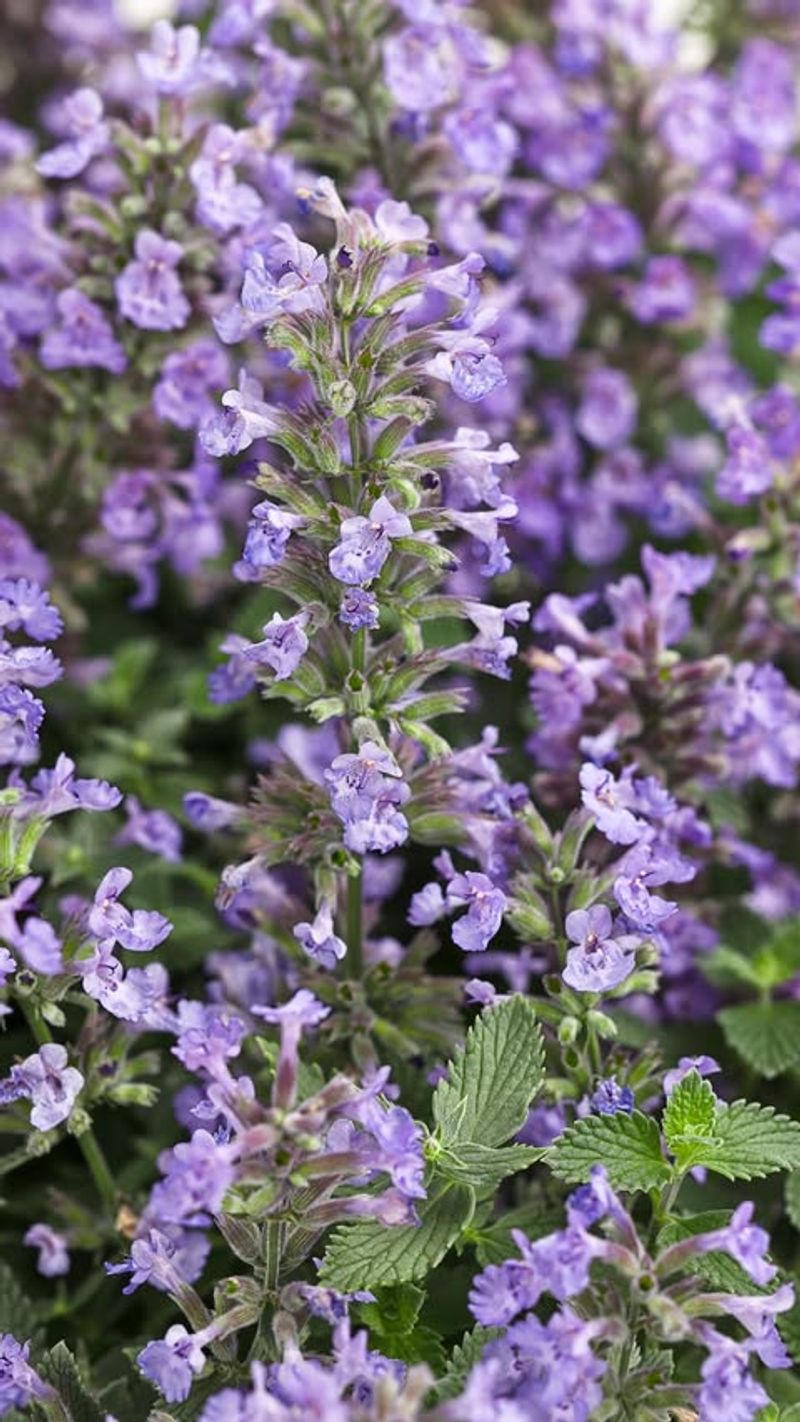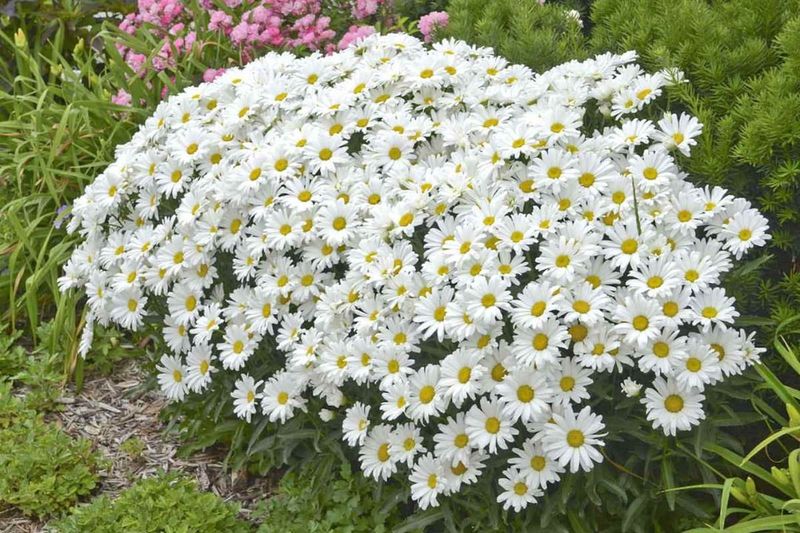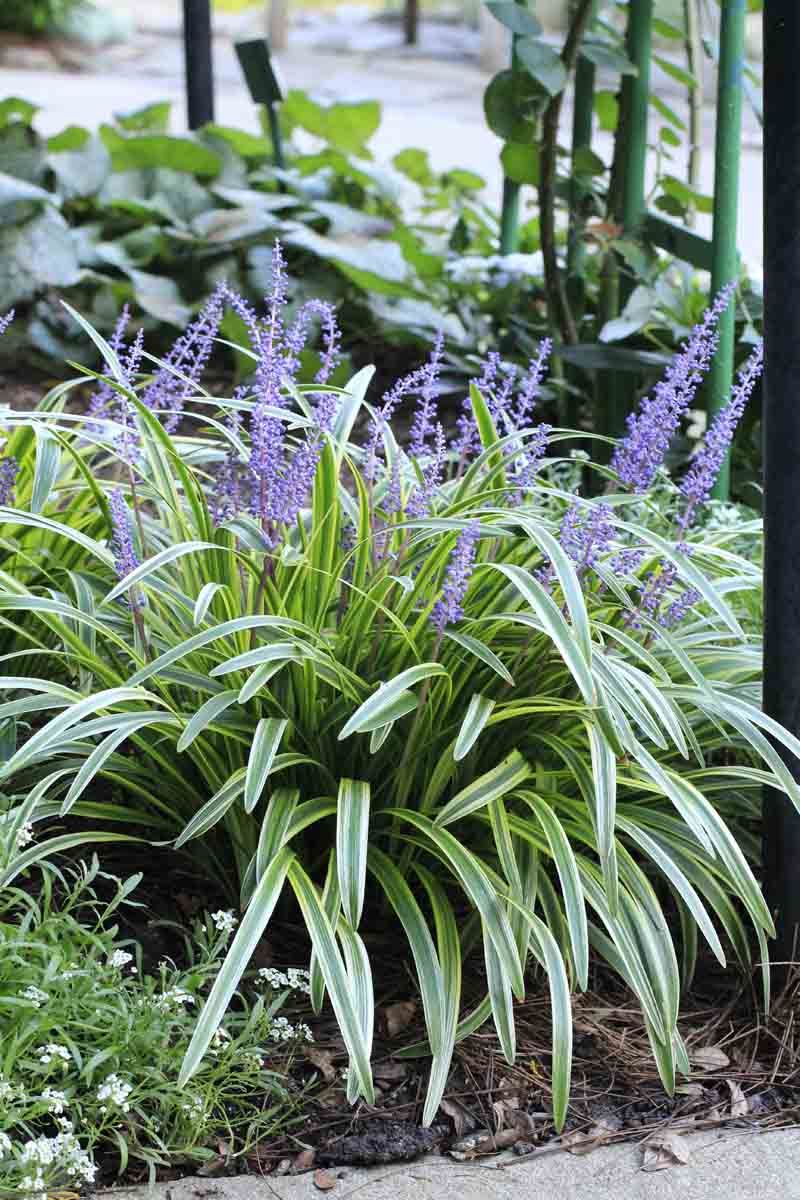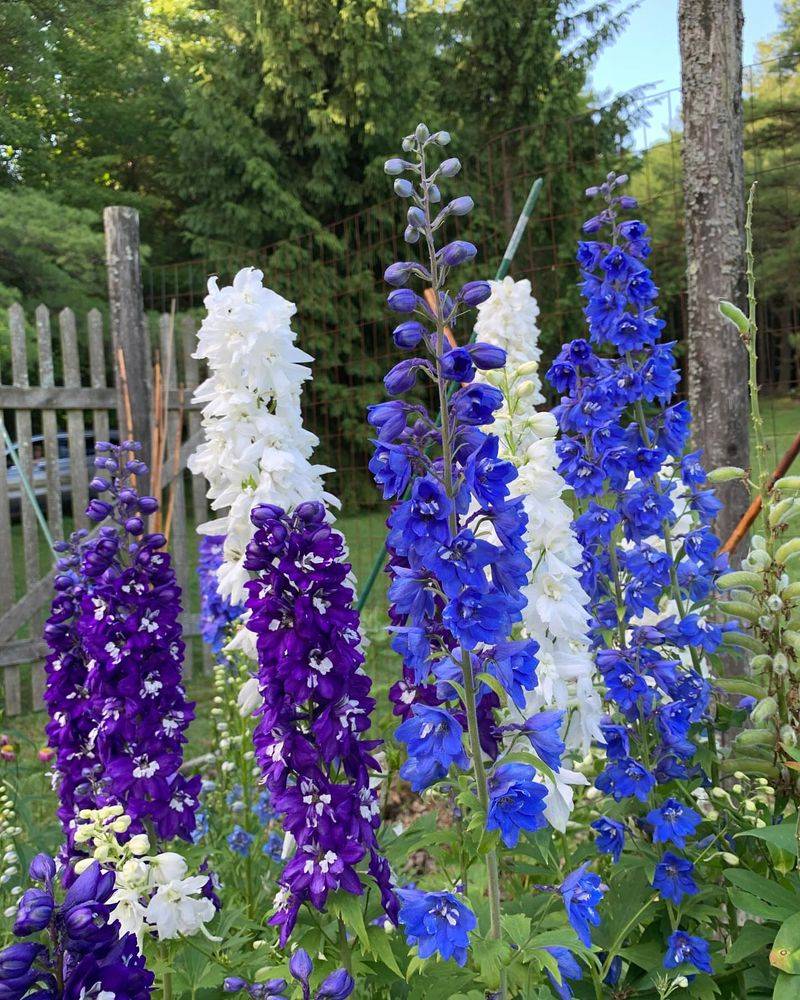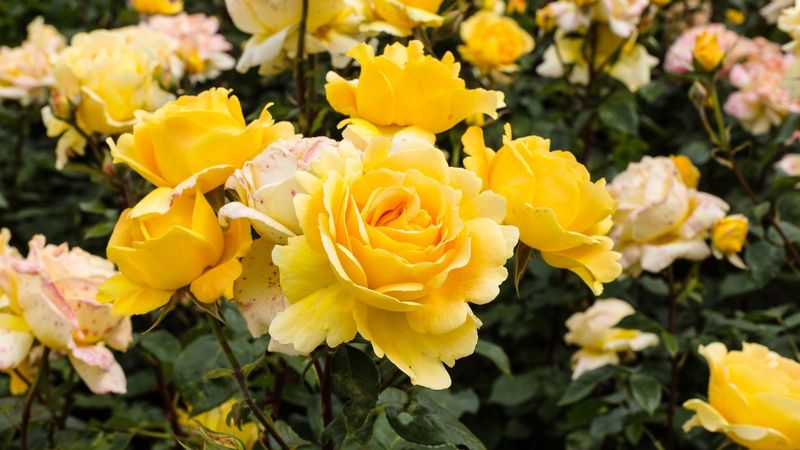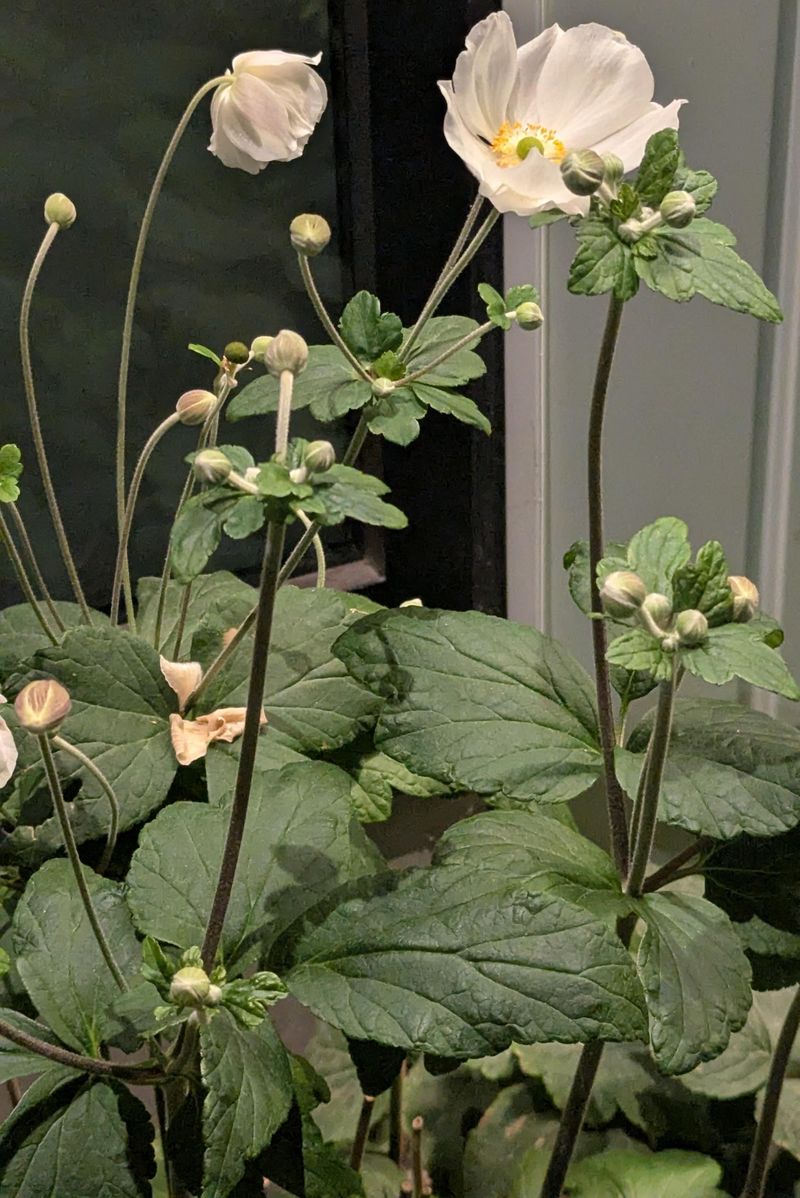Tired of the yearly planting hustle? Perennials make gardening easier by coming back season after season with consistent beauty. Some thrive with minimal fuss, while others demand more care than their charm might warrant.
Coneflowers, salvia, and daylilies are standout performers—low maintenance, long blooming, and great for pollinators. But others like certain lupines or delphiniums might look stunning and then sulk without just the right conditions.
Choose wisely and you’ll get a garden that rewards you for years. With the right mix of hardworking perennials and a few seasonal showstoppers, your flower beds will stay vibrant without all the replanting drama.
1. Lavender
Growing in poor soil is actually preferred by this Mediterranean native. Once established, it rarely needs watering except during severe drought conditions.
The gray-green foliage and purple flowers add structure to any garden bed. Bees and butterflies flock to it while deer tend to stay away because of the strong scent.
My patch has survived three harsh winters with minimal care. Just cut it back in early spring and avoid overwatering – too much moisture is the quickest way to kill lavender.
2. Black-Eyed Susan
Drought tolerance makes these golden bloomers a staple in low-maintenance gardens. They self-seed readily, creating natural colonies that return year after year with zero effort.
Summer gardens light up with their cheerful yellow flowers that last for weeks. Cut flowers for indoor arrangements and the plants will produce even more blooms.
After trying fussier perennials that failed, I planted these along my driveway five years ago. They’ve expanded beautifully despite complete neglect and poor soil conditions.
3. Sedum ‘Autumn Joy’
Succulent leaves store water, making this plant incredibly drought-resistant. It thrives in poor soil and actually performs worse if you pamper it with rich soil and extra water.
Green broccoli-like buds in summer transform to pink and then copper-red in fall. The dried flower heads provide winter interest and food for birds when other plants have disappeared.
During a two-week vacation, my garden suffered except for the sedums. They’ve never been watered outside of rainfall in five years, yet they return reliably each spring.
4. Daylily
Surviving in almost any condition makes daylilies the true workhorses of perennial gardens. They shrug off poor soil, drought, and neglect while continuing to bloom profusely.
Each flower lasts just one day, but plants produce so many buds that the show continues for weeks. The strappy foliage remains attractive even when not in bloom.
After dividing a few plants from my grandmother’s garden, I’ve expanded to dozens without buying a single new one. Simply dig and divide every few years to keep them vigorous.
5. Coneflower (Echinacea)
Native prairie roots run deep, allowing coneflowers to withstand drought and poor soil conditions. They rarely need division and resist most pests and diseases naturally.
Daisy-like flowers with raised centers bloom for months in summer. Seed heads attract goldfinches and other birds that cling to the stems for a winter feast.
A neighbor complained about her failing garden during last summer’s drought. Meanwhile, my coneflowers kept blooming without supplemental water, proving their worth during tough conditions.
6. Russian Sage
Silvery foliage and woody stems signal this plant’s incredible drought tolerance. Once established, it rarely needs watering and actually suffers from too much attention.
Airy blue-purple flower spikes wave above silver foliage from midsummer until frost. The aromatic leaves deter deer and rabbits while attracting beneficial pollinators to your garden.
Planted along my hot, dry driveway where sprinklers don’t reach, Russian sage has flourished for years. Just cut it back to about 12 inches in early spring and it regrows perfectly.
7. Hosta
Shade tolerance makes hostas perfect for difficult spots under trees or along north-facing foundations. Their shallow root systems rarely compete with tree roots, solving a common garden challenge.
Foliage comes in endless variations of green, blue, yellow, and variegated patterns. The leaves create beautiful textural contrast against finer-leaved plants in shade gardens.
During a basement renovation, construction workers repeatedly trampled my hostas. By the next spring, they emerged unscathed – proving their incredible resilience even to outright abuse.
8. Ornamental Grasses
Deep roots and natural adaptations make ornamental grasses some of the toughest plants in any garden. Most varieties need cutting back just once yearly in late winter.
Four-season interest begins with fresh spring growth, summer flowers, fall color, and winter structure. Movement and sound add sensory dimensions as breezes rustle through the leaves and seed heads.
When drought restrictions limited watering last summer, my miscanthus and feather reed grass continued looking fresh while neighbors’ lawns turned brown. They’ve never needed fertilizer or pest control in seven years.
9. Coral Bells (Heuchera)
Semi-evergreen leaves persist through mild winters, providing year-round interest with minimal cleanup. Most varieties tolerate drought once established and resist deer browsing.
Foliage colors range from purple-black to caramel, chartreuse, silver, and ruby red. Small bell-shaped flowers on slender stems attract hummingbirds while the leaves form attractive mounds.
A container of ‘Palace Purple’ heuchera sat forgotten on my patio through winter. Despite freezing temperatures and no water, it survived and thrived when planted in spring – a testament to its toughness.
10. Yarrow
Medicinal heritage hints at yarrow’s incredible resilience – plants used for healing typically survive harsh conditions. It thrives in poor, dry soil where fussier plants would fail.
Flat-topped flower clusters in white, yellow, pink or red appear above ferny foliage in summer. The flowers dry naturally on the plant and can be harvested for long-lasting dried arrangements.
My garden bed with heavy clay soil seemed hopeless until I tried yarrow. It not only survived but spread to fill the space, flowering abundantly despite receiving no amendments or special care.
11. Peony
Century-old plants still flowering around farmhouses prove peonies’ incredible longevity. Once established, they rarely need division and actually resent being moved or disturbed.
Massive blooms in late spring create a spectacular display that improves yearly as plants mature. The glossy foliage remains attractive throughout summer and fall, turning reddish before frost.
The peonies bordering my driveway were planted by previous homeowners decades ago. Despite receiving zero care from me for eight years, they produce bigger displays each May with absolutely no intervention.
12. Baptisia (False Indigo)
Taproot systems reach deep into soil, making established plants extremely drought-resistant. Their prairie heritage means they need no fertilizer and actually perform better in lean soil.
Blue, yellow, or white lupine-like flowers rise above blue-green foliage in late spring. Black seed pods develop later, providing rattling interest when dry and adding architectural elements to winter gardens.
Initially slow to establish, my baptisia barely grew the first two years. By year four, it had transformed into a substantial shrub-like plant that now anchors my perennial border without any maintenance.
13. Nepeta (Catmint)
Gray-green aromatic foliage signals this plant’s Mediterranean heritage and drought tolerance. It bounces back quickly from severe pruning, allowing for multiple bloom cycles in one season.
Lavender-blue flower spikes appear in early summer, attracting bees and butterflies by the dozens. A quick shearing after the first flush of bloom results in a repeat performance a few weeks later.
Planting nepeta along my front walkway was the best decision – it’s survived dog traffic, accidental trampling, and neglect. A quick haircut mid-season keeps it looking fresh when other perennials begin to fade.
14. Shasta Daisy
Carefree growth makes these classic white daisies perfect for beginners. They establish quickly and form sizeable clumps within a couple of seasons without becoming invasive.
White petals surrounding golden centers create the classic daisy form that works in any garden style. The sturdy stems rarely need staking and make excellent cut flowers that last over a week indoors.
During a particularly busy summer when garden maintenance fell to the bottom of my priority list, Shasta daisies kept blooming beautifully without deadheading. They’ve survived winters with no protection in my zone 5 garden.
15. Liriope (Lilyturf)
Growing where grass struggles makes liriope invaluable for difficult spots. It tolerates deep shade, tree root competition, and dry conditions once established.
Grassy foliage creates neat mounds that remain evergreen in mild climates. Purple flower spikes in late summer add unexpected color when many perennials have finished blooming.
After removing a struggling lawn under mature trees, I planted liriope as a ground cover. Five years later, it has filled in completely with zero maintenance beyond a quick shearing in early spring.
16. Delphinium
High-maintenance reputations are well-deserved with these temperamental beauties. They demand rich, perfectly-drained soil, regular feeding, and consistent moisture without getting their foliage wet.
Tall spires of blue, purple, or white flowers create dramatic vertical elements in gardens. Unfortunately, their glory is short-lived, with bloom periods lasting barely two weeks.
My third attempt at growing delphiniums finally succeeded, but only with staking, slug protection, wind protection, and careful watering. When a week-long business trip coincided with flowering time, I returned to find them collapsed and rotting.
17. Hybrid Tea Roses
Spray schedules alone make these roses high-maintenance nightmares. They require fungicide applications every 7-14 days to prevent black spot, powdery mildew, and rust in most climates.
Perfect flowers with high centers and pointed petals are their claim to fame. However, achieving those catalog-worthy blooms demands constant vigilance against pests, diseases, and weather damage.
After inheriting a bed of hybrid teas with my house, I spent two seasons battling their problems before replacing them. The amount of chemicals required to keep them looking decent conflicted with my desire for a more sustainable garden.
18. Japanese Anemone
Invasive tendencies make these late-summer bloomers problematic in many gardens. Their underground runners spread aggressively, popping up yards away from the original planting.
Pink or white flowers on tall stems look graceful swaying in autumn breezes. But controlling their spread requires constant vigilance and removal of wayward shoots.
A single plant gifted by a neighbor has become my garden nemesis. Five years later, I’m still finding seedlings throughout my yard, even in areas where I never planted them. Removing established clumps requires digging out every fragment of root.

